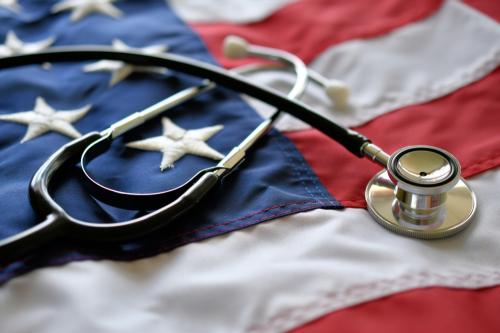In an era of sophisticated information technology and rapid communication, the medical device community lags far behind other fields in its ability to alert patients about safety concerns. For example, auto manufacturers and government regulators are able to quickly identify potential safety concerns by linking reports of crashes, malfunctions and defects with individual vehicle identification numbers (VINs). They can then communicate recalls to affected customers by using their VIN. Manufacturers will issue notifications via mail or e-mail, or offer customers the ability to search the manufacturer’s website using their VIN.
In health care, drugs are tracked using a system established in the 1970s called National Drug Codes (NDCs). The 10-digit NDCs are assigned to all manufactured medications. The code tracks the vendor, product, and package code, which can then be captured in electronic health records and the FDA’s national database.
Unfortunately, we do not yet have a similar national system that can identify and communicate potential concerns for the tens of millions of patients with implantable devices such as pacemakers, glucose meters, artificial joints, and defibrillators. Patients are bombarded by news stories about device recalls, but unless they have access to information about the exact make and model of their device, they have no way of knowing if they should be concerned. Since most medical device procedures take place in a hospital, a patient’s health care providers may also lack this critical, sometimes life-saving information. The patient is then burdened with the task of tracking down their specialist or surgeon, in hopes that they documented the specific device information.
Clearly, the current health care information infrastructure does not yet support a robust surveillance system. This limits the ability of FDA, providers, payers, and manufacturers to respond quickly and directly when safety issues arise. We also lack the ability to incorporate patient-relevant information that supports evaluation, or can compare which devices are more effective and why; in what settings; and for whom. Although the Patient-Centered Outcomes Research Institute (PCORI) is aggressively building a national network for collecting data to conduct comparative effectiveness research, there is no straightforward approach to include medical devices without an effective tracking system.
The Path Forward
Key stakeholders in the public and private sector recognize that building an accessible and user-friendly national surveillance system that offers critical data for providers and consumers is more important than ever. Fortunately, two critical steps are already underway.
Standardized coding. The first major accomplishment was developing a universal coding system to identify and enable the tracking of each device, exactly like a VIN or National Drug Code. Congress mandated the development of the Unique Device Identifier System (UDIs) in September 2013. It will establish a standard coding system to label nearly all medical devices, and will eventually link to electronic health records and possibly other technologies.
Design and Strategy for System Design. The springboard for implementing this robust tracking system is figuring out its infrastructure. This includes convening leading experts that will provide guidance for how such a system will be governed, structured, coordinated, and funded. In partnership with a number of medical device industry leaders, including from the private sector and five government agencies, the Engelberg Center for Health Care Reform has formed a National Medical Device Postmarket Surveillance System Planning Board. The objectives of this board were originally outlined in a 2012 FDA report titled, Strengthening Our National System for Medical Device Postmarket Surveillance.
The path forward is indeed promising. The development of UDIs, as well as the constant innovation of health IT tools, and a growing evidence base of support, has created a ripe opportunity for building the proper infrastructure that will bolster patient safety and clinical outcomes. Building such a system will come at a cost and it will be important to ensure it is sustainable and worth the investment. Ultimately, this system can play a major role in improving public health by facilitating the development of novel medical devices; identifying opportunities to improve quality of care; and ultimately saving health care costs through more effective treatments.
The Brookings Institution is committed to quality, independence, and impact.
We are supported by a diverse array of funders. In line with our values and policies, each Brookings publication represents the sole views of its author(s).



Commentary
Medical Devices and Patient Safety: A Promising Path Forward
May 1, 2014